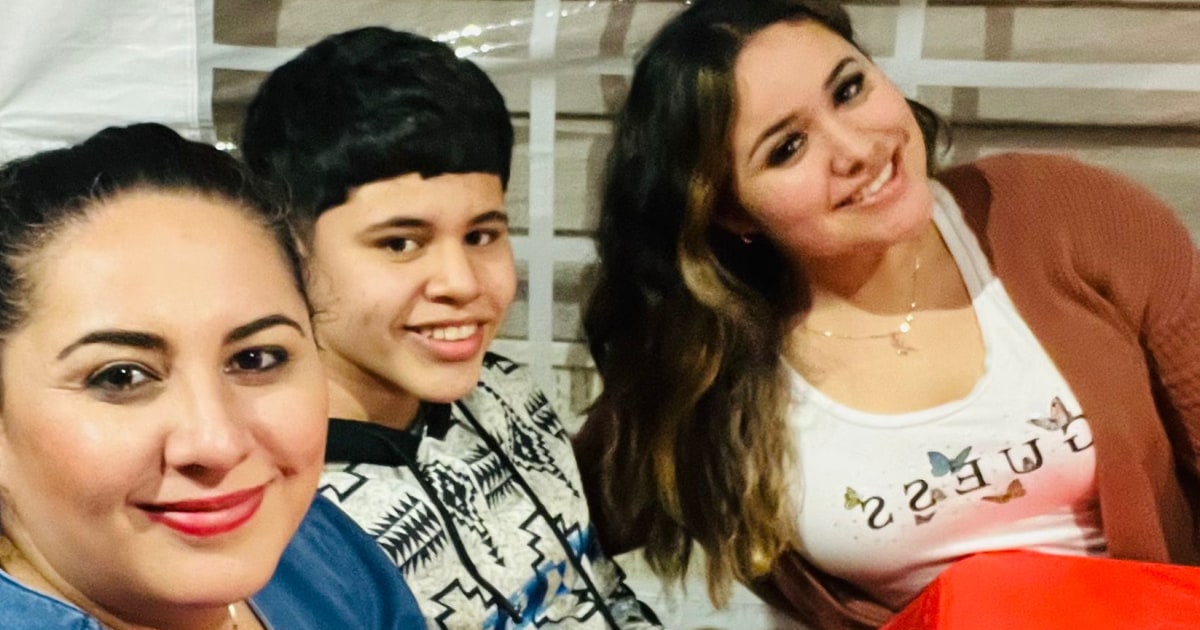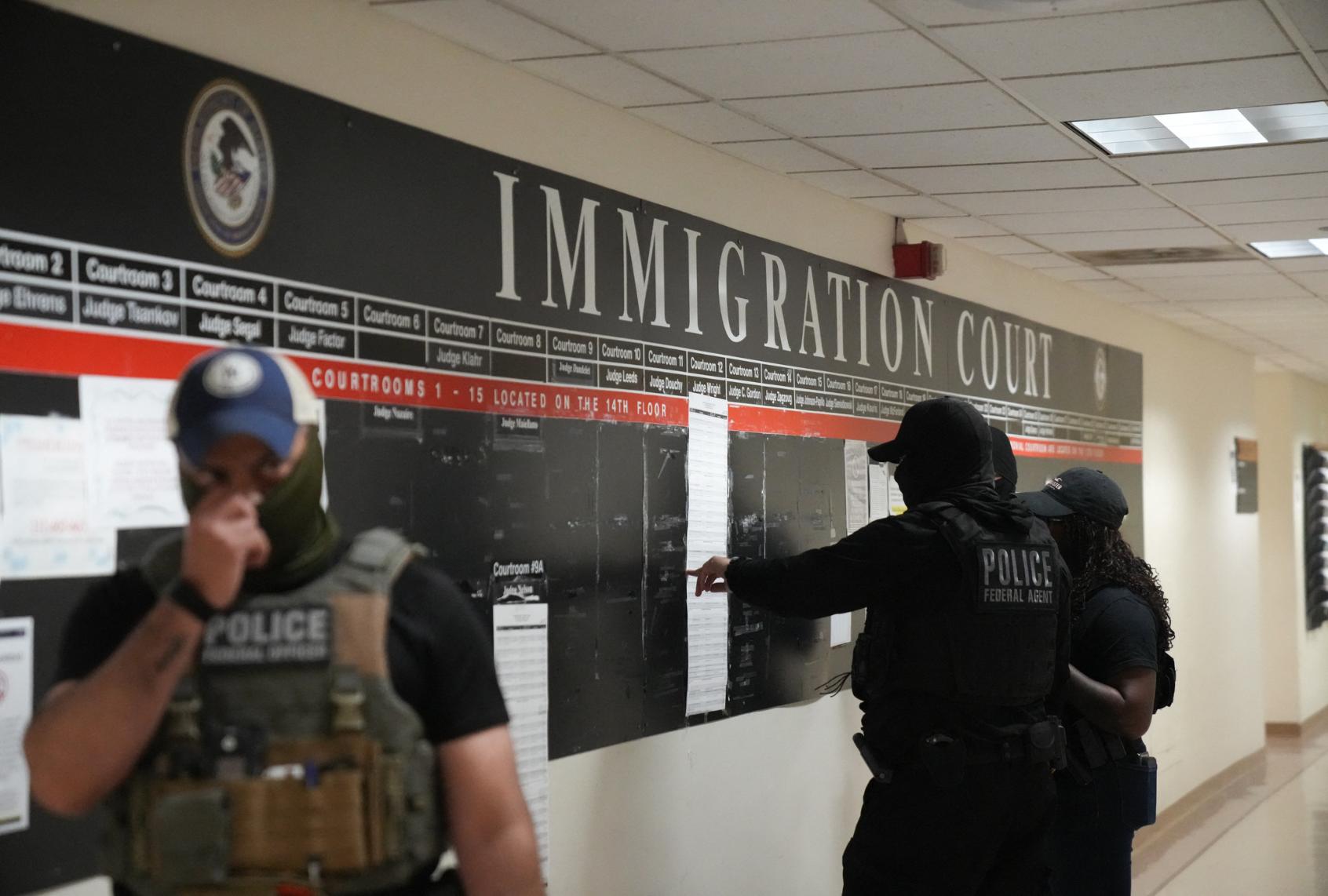Stephen Miller, the front man for Donald Trump’s deportation campaign against immigrants, took to the airwaves the other day to explain why native-born Americans will just love living in a world cleansed of undocumented workers.
“What would Los Angeles look like without illegal aliens?” he asked on Fox News. “Here’s what it would look like: You would be able to see a doctor in the emergency room right away, no wait time, no problems. Your kids would go to a public school that had more money than they know what to do with. Classrooms would be half the size. Students who have special needs would get all the attention that they needed. … There would be no fentanyl, there would be no drug deaths.” Etc., etc.
No one can dispute that the world Miller described on Fox would be a paradise on Earth. No waiting at the ER? School districts flush with cash? No drug deaths? But that doesn’t obscure that pretty much every word Miller uttered was fiction.
Trump aide Stephen Miller concocts a fantasy about L.A.
The gist of Miller’s spiel — in fact, the worldview that he has been espousing for years — is that “illegal aliens” are responsible for all those ills, and exclusively responsible. It’s nothing but a Trumpian fantasy.
Let’s take a look, starting with overcrowding at the ER.
The issue has been the focus of numerous studies and surveys. Overwhelmingly, they conclude that undocumented immigration is irrelevant to ER overcrowding. In fact, immigrants generally and undocumented immigrants in particular are less likely to get their healthcare at the emergency room than native-born Americans.
In California, according to a 2014 study from UCLA, “one in five U.S.-born adults visits the ER annually, compared with roughly one in 10 undocumented adults — approximately half the rate of U.S.-born residents.”
Among the reasons, explained Nadereh Pourat, the study’s lead author and director of research at the UCLA Center for Health Policy Research, was fear of being asked to provide documents.
The result is that undocumented individuals avoid seeking any healthcare until they become critically ill. The UCLA study found that undocumented immigrants’ average number of doctor visits per year was lower than for other cohorts: 2.3 for children and 1.7 for adults, compared with 2.8 doctor visits for U.S.-born children and 3.2 for adults.
ER overcrowding is an issue of long standing in the U.S., but it’s not the result of an influx of undocumented immigrants. It’s due to a confluence of other factors, including the tendency of even insured patients to use the ER as a primary care center, presenting with complicated or chronic ailments for which ER medicine is not well-suited.
While caseloads at emergency departments have surged, their capacities are shrinking.
According to a 2007 report by the National Academy of Sciences, from 1993 to 2003 the U.S. population grew by 12%, hospital admissions by 13% and ER visits by 26%. “Not only is [emergency department] volume increasing, but patients coming to the ED are older and sicker and require more complex and time-consuming workups and treatments,” the report observed. “During this same period, the United States experienced a net loss of 703 hospitals, 198,000 hospital beds, and 425 hospital EDs, mainly in response to cost-cutting measures.”
President Trump’s immigration policies during his first term suppressed the use of public healthcare facilities by undocumented immigrants and their families. The key policy was the administration’s tightening of the “public charge” rule, which applies to those seeking admission to the United States or hoping to upgrade their immigration status.
The rule, which has been part of U.S. immigration policy for more than a century, allowed immigration authorities to deny entry — or deny citizenship applications of green card holders — to anyone judged to become a recipient of public assistance such as welfare (today known chiefly as Temporary Assistance for Needy Families, or TANF) or other cash assistance programs.
Until Trump, healthcare programs such as Medicaid, nutrition programs such as food stamps, and subsidized housing programs weren’t part of the public charge test.
Even before Trump implemented the change but after a draft version leaked out, clinics serving immigrant communities across California and nationwide detected a marked drop off in patients.
A clinic on the edge of Boyle Heights in Los Angeles that had been serving 12,000 patients, I reported in 2018, saw monthly patient enrollments fall by about one-third after Trump’s 2016 election, and an additional 25% after the leak. President Biden rescinded the Trump rule within weeks of taking office.
Undocumented immigrants are sure to be less likely to access public healthcare services, such as those available at emergency rooms, as a result of Trump’s rescinding “sensitive location” restrictions on immigration agents that had been in effect at least since 2011.
That policy barred almost all immigration enforcement actions at schools, places of worship, funerals and weddings, public marches or rallies, and hospitals. Trump rescinded the policy on inauguration day in January.
The goal was for Immigration and Customs Enforcement, or ICE, agents “to make substantial efforts to avoid unnecessarily alarming local communities,” agency officials stated. Today, as public shows of force and public raids by ICE have demonstrated, instilling alarm in local communities appears to be the goal.
The change in the sensitive locations policy has prompted hospital and ER managers to establish formal procedures for staff confronted with the arrival of immigration agents.
A model policy drafted by the Emergency Medicine Residents Assn. says staff should request identification and a warrant or other document attesting to the need for the presence of agents. It urges staff to determine whether the agents are enforcing a judicial warrant (signed by a judge) or administrative warrant (issued by ICE). The latter doesn’t grant agents access to private hospital areas such as patient rooms or operating areas.
What about school funding? Is Miller right to assert that mass deportations will free up a torrent of funding and cutting class sizes in half? He doesn’t know what he’s talking about.
Most school funding in California and most other places is based on attendance. In California, the number of immigrant children in the schools was 189,634 last year. The total K-12 population was 5,837,700, making the immigrant student body 3.25% of the total. Not half.
In the Los Angeles Unified School District, the estimated 30,000 children from immigrant families amounted to about 7.35% of last year’s enrollment of 408,083. Also not half.
With the deportation of immigrant children, the schools would lose whatever federal funding was attached to their attendance. Schools nationwide receive enhanced federal funding for English learners and other immigrants. That money, presumably, would disappear if the pupils go.
What Miller failed to mention on Fox is the possible impact of the Trump administration’s determination to shutter the Department of Education, placing billions of dollars of federal funding at risk. California receives more than $16 billion a year in federal aid to K-12 schools through that agency. Disabled students are at heightened risk of being deprived of resources if the agency is dismantled.
Then there’s fentanyl. The Trump administration’s claim that undocumented immigrants are major players in this crisis appears to be just another example of its scapegoating of immigrants. The vast majority of fentanyl-related criminal convictions — nearly 90% — are of U.S. citizens. The rest included both legally present and undocumented immigrants. (The statistics comes from the U.S. Sentencing Commission.)
In other words, deport every immigrant in the United States, and you still won’t have made a dent in fentanyl trafficking, much less eliminate all drug deaths.
What are we to make of Miller’s spiel about L.A.? At one level, it’s echt Miller: The portrayal of the city as a putative hellscape, larded with accusations of complicity between the city leadership and illegal immigrants — “the leaders in Los Angeles have formed an alliance with the cartels and criminal aliens,” he said, with zero pushback from his Fox News interlocutor.
At another level, it’s a malevolent expression of white privilege. In Miller’s ideology, the only obstacles to the return to a drug-free world of frictionless healthcare and abundantly financed education are immigrants. This ideology depends on the notion that immigrants are raiding the public purse by sponging on public services.
The fact is that most undocumented immigrants aren’t eligible for most such services. They can’t enroll in Medicare, receive premium subsidies under the Affordable Care Act, or collect Social Security or Medicare benefits (though typically they submit falsified Social Security numbers to employers, so payments for the program are deducted from their paychecks).
A 2013 study by the libertarian Cato Institute found that low-income immigrants use public benefits for which they’re eligible, such as food stamps, “at a lower rate than native-born low-income residents.”
If there’s an impulse underlying the anti-immigrant project directed by Miller other than racism, it’s hard to detect.
Federal Judge Maame Ewusi-Mensah Frimpong, who last week blocked federal agents from using racial profiling to carry out indiscriminate immigration arrests in Los Angeles, ruled that during their “roving patrols” in Los Angeles, ICE agents detained individuals principally because of their race, that they were overheard speaking Spanish or accented English, that they were doing work associated with undocumented immigrants, or were in locations frequented by undocumented immigrants seeking day work.
Miller goes down the same road as ICE — indeed, by all accounts, he’s the motivating spirit behind the L.A. raids. Because he can’t justify the raids, he has ginned up a fantasy of immigrants disrupting our healthcare and school programs, and the corollary fantasy that evicting them all will produce an Earthly paradise for the rest of us. Does anybody really believe that?









